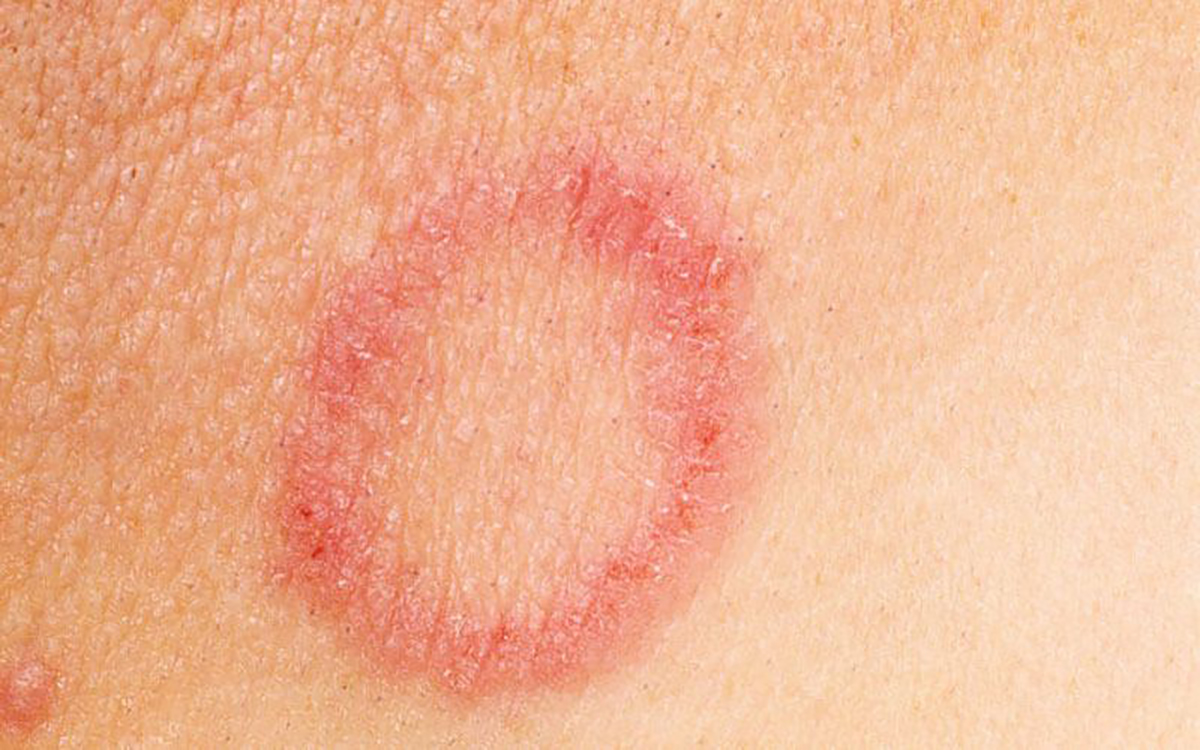Dermatomycosis is a common disease, the incidence accounts for about 27.3%, the first cause to mention is the climate in Vietnam. Our country belongs to a hot and humid tropical area that is a suitable condition for skin fungi to spread and develop. Dermatomycosis has many common ways of transmission such as: infection from fungal spores in the air and surroundings, sick animals spread to humans, sick people spread to healthy people ... If there are people in the house with fungal infections, relatives are at very high risk of skin fungus if they do not pay attention to hygiene, share things, share beds....
Why is skin fungus so popular?
Our country in the tropics (hot and humid) is suitable for the development of fungal skin diseases. The most common are ringworm, tinea versicolor, interstitial fungus.... Fungi are a type of inferior organism without chlorophyll, so they cannot synthesize organic matter, but must live by parasitizing hosts: plants, animals (dogs, cats, cattle ...) and humans.
Humans are infected with fungi from the following sources: environment (soil, trees, air ...), animals (dogs, cats, horses ...), sick people to healthy people. Favorable conditions for mycosis are pH 6.9 – 7.2 slightly alkaline, closed skin areas, large interstitial folds or sweating, dampness, poor personal hygiene, wearing tight clothes, abuse of soap, excessive sweating, hot and humid temperature 27 - 35 degrees Celsius, reduced resistance, endocrine disorders, taking immunosuppressive drugs, taking antibiotics for a long time....
Common fungal skin diseases
- Tinea versicolor
Tinea versicolor, caused by the fungus Pityrosporum, usually comes in two forms: white and black. The disease causes itching, especially when in the sun or sweaty skin. At this time, the patient has a feeling of being pricked by a slight needle, causing unbearable itching. Tinea versicolor depends quite a lot on skin hygiene, resistance, pH of the skin and also skin moisture. Some cases in the same family have someone with tinea versicolor but other relatives do not.
- Ringworm mushroom
Typically, ringworm fungus with the first sign of itching of the diseased area, then a reddish streak, with a pronounced border and margin, on the border with speckled blisters. The fungal border tends to spread more and more, forming many arcs if not detected and treated in time. When the patient itches, scratching will spread to many dark areas of his body.
Ringworm is one of the dermatological diseases capable of being transmitted from one person to another, often due to the sharing of household items such as sharing clothes, face towels - towels, sleeping in the same bed, covering with blankets ...

- Interstitial fungus
The etiology of the disease is caused by the fungus Epidermophyton, the fungus Trichophyton or also caused by the fungus Candida albicans. The disease is common in people whose occupations have to immerse their feet in water for many hours, continuously for many days such as farmers, sewer cleaners, swimmers.... Interstitial fungi usually have 3 forms: dry exfoliation, vesicular and interstitial inflammation.
- Onychomycosis
Onychomycosis is usually caused by Trichophyton. The disease occurs on the free bank of the nail or on the sides of the nail. When sick, the nail will lose its glossy color, be pushed up or defective, the surface of the nail is holed or in the groove, under the groove there is a powdery substance. The nails of the sick person are increasingly rough, yellow or cloudy. The disease can spread from one nail to another.
In addition to Trichophyton fungus, there is nail fungus caused by the fungus Candida albicans that causes damage inside the corner of the nail, the nail grows out protruding, the skin of the corner area of the nail is also damaged, swollen, red and sometimes festering.

See more product information here.